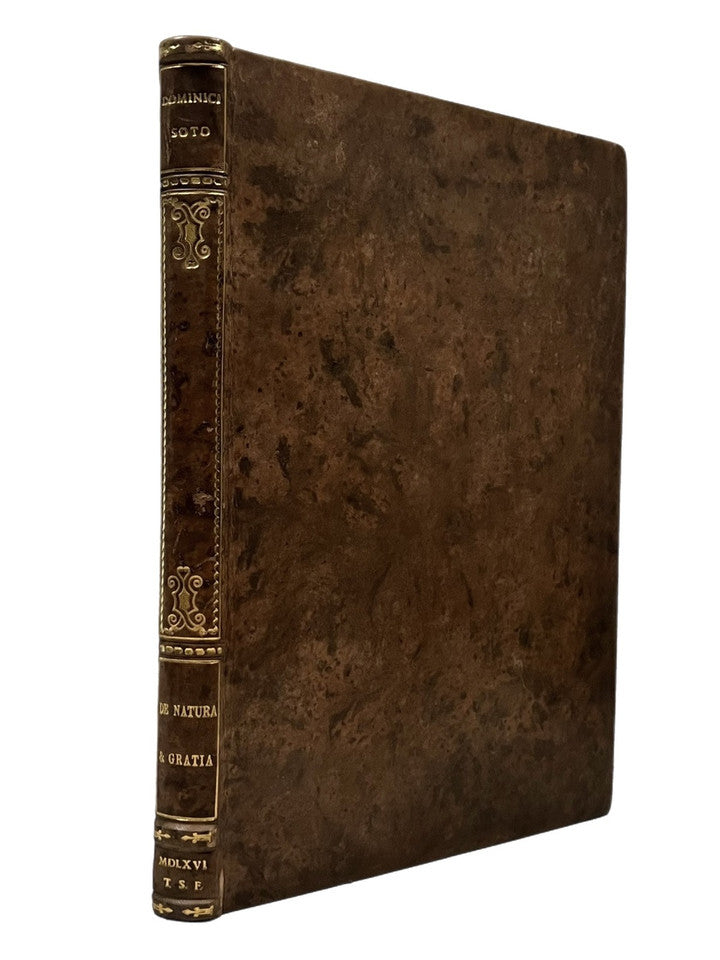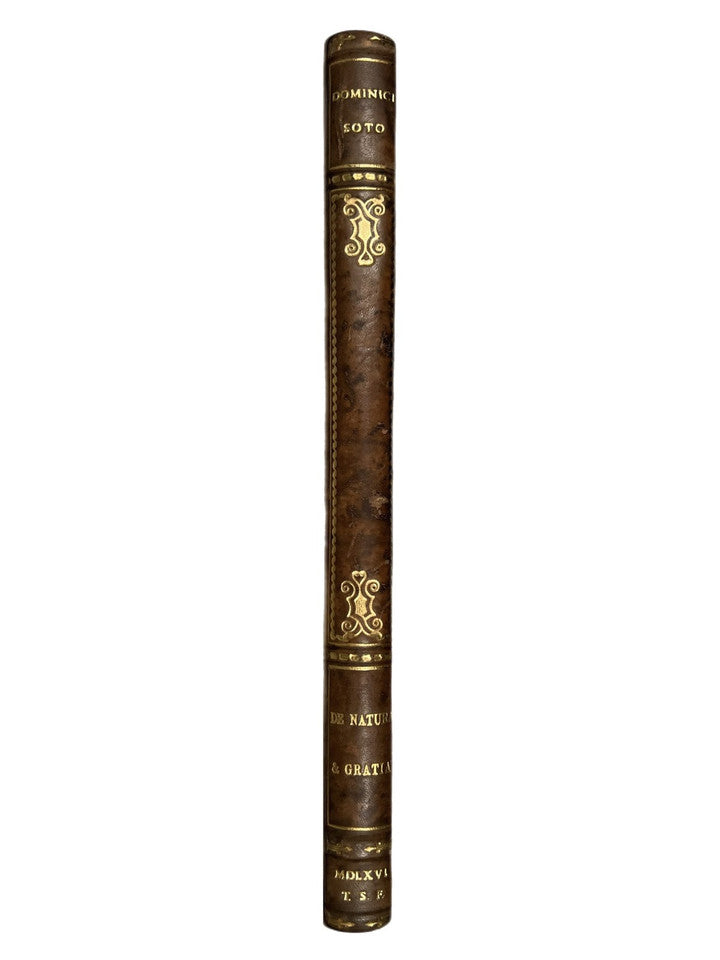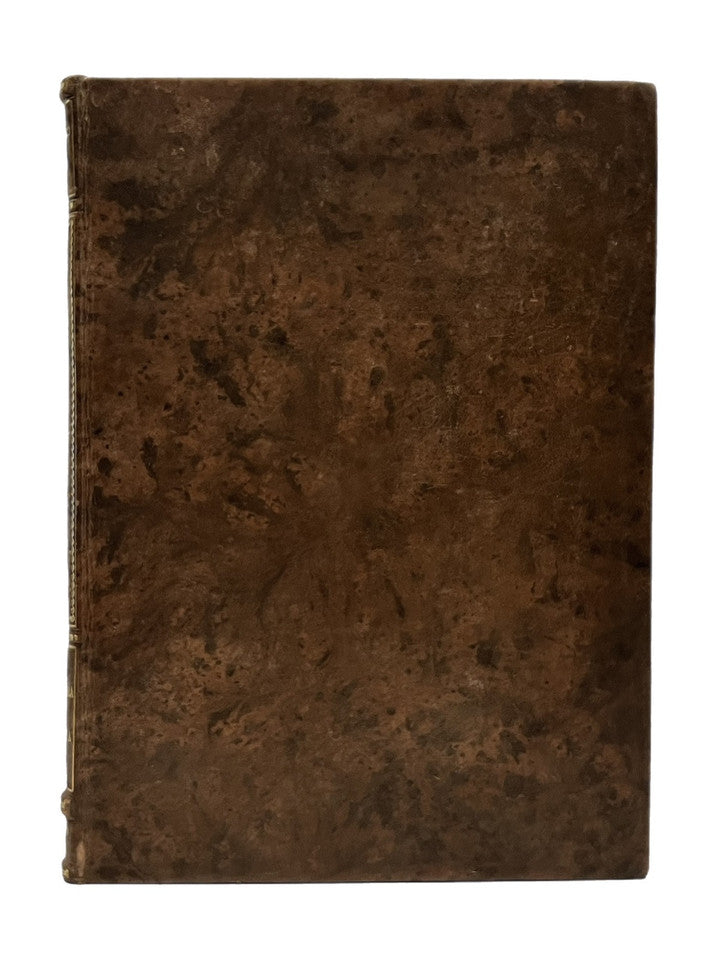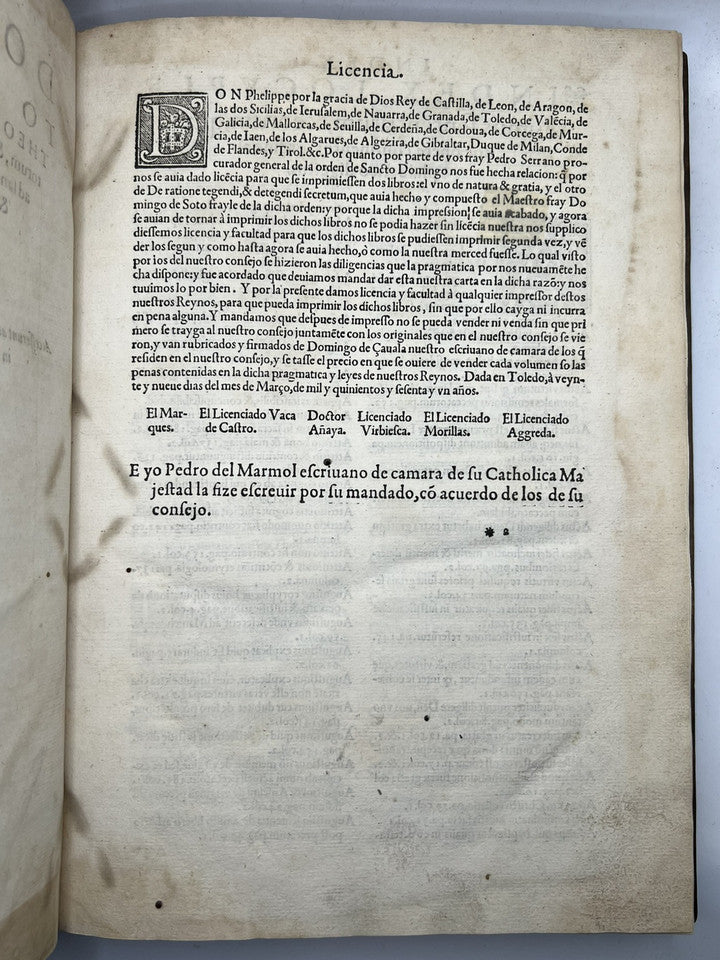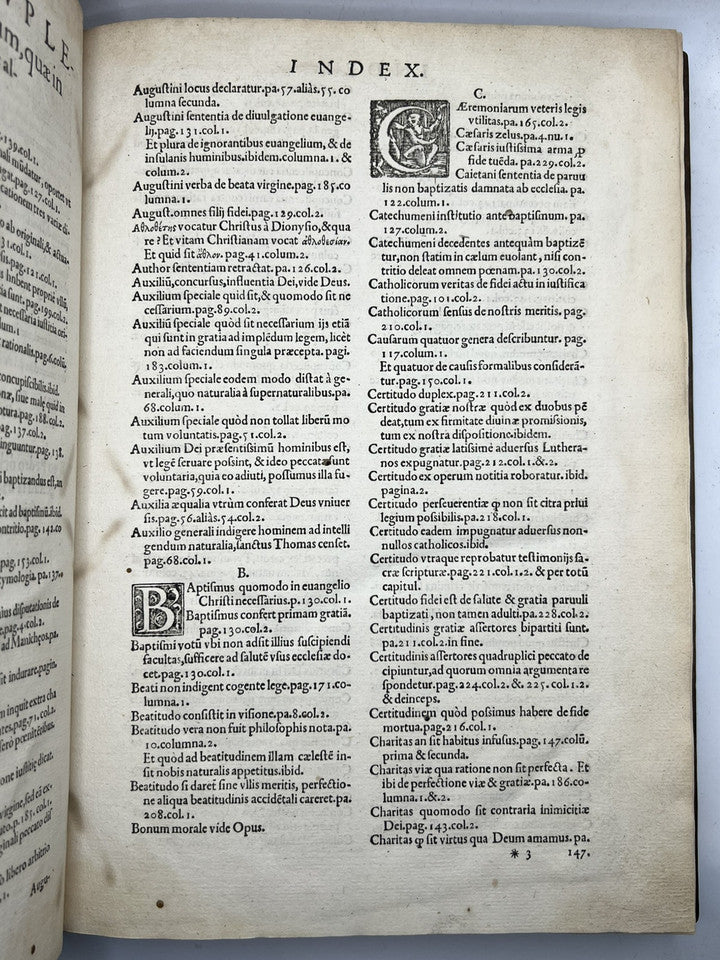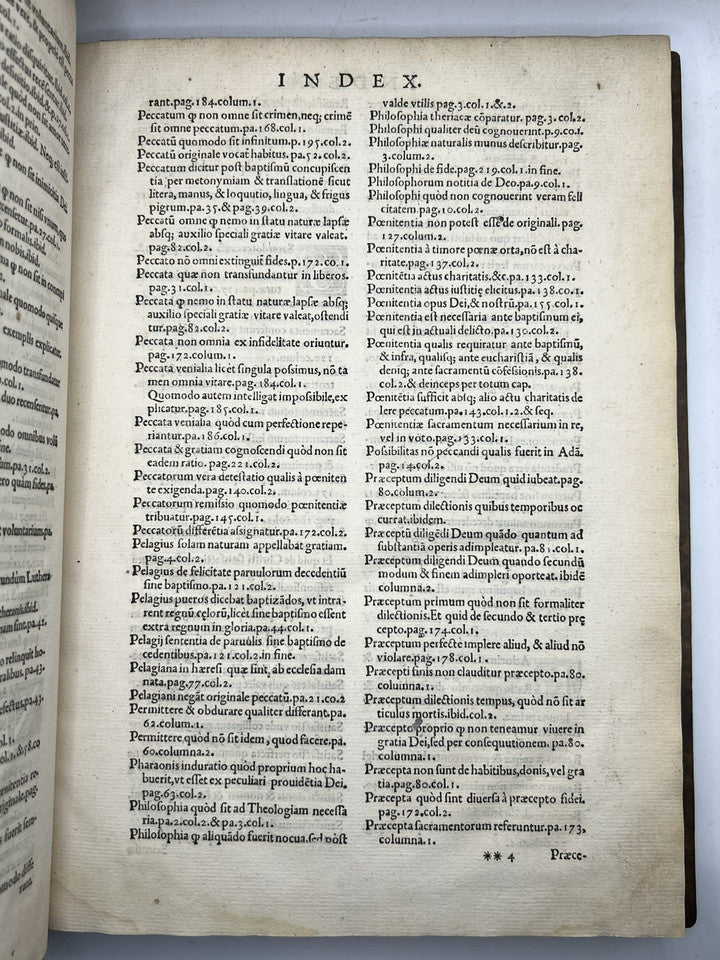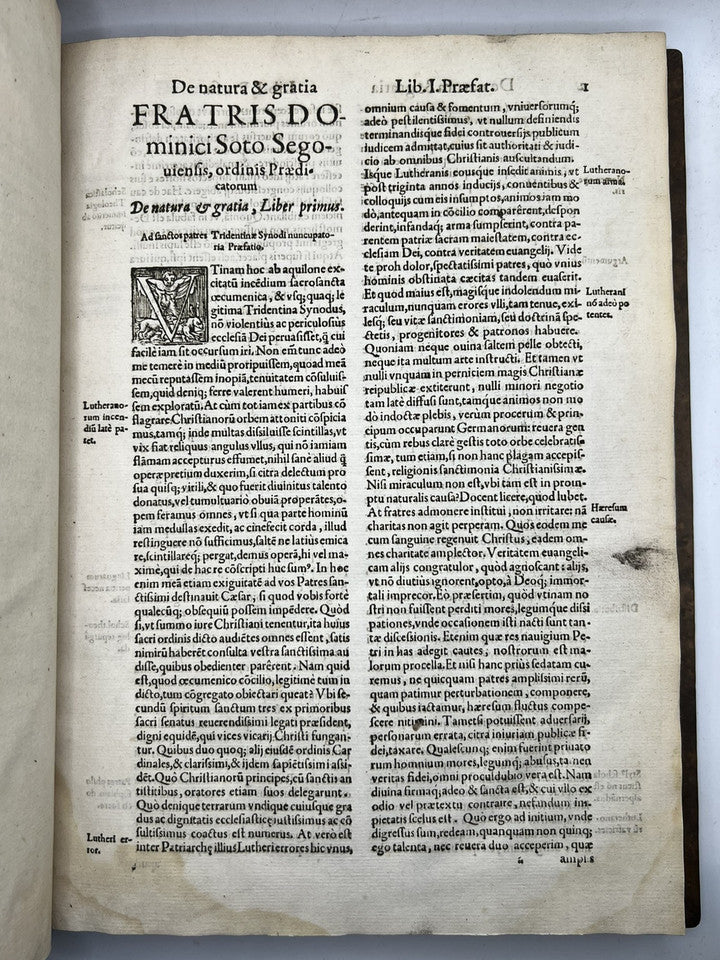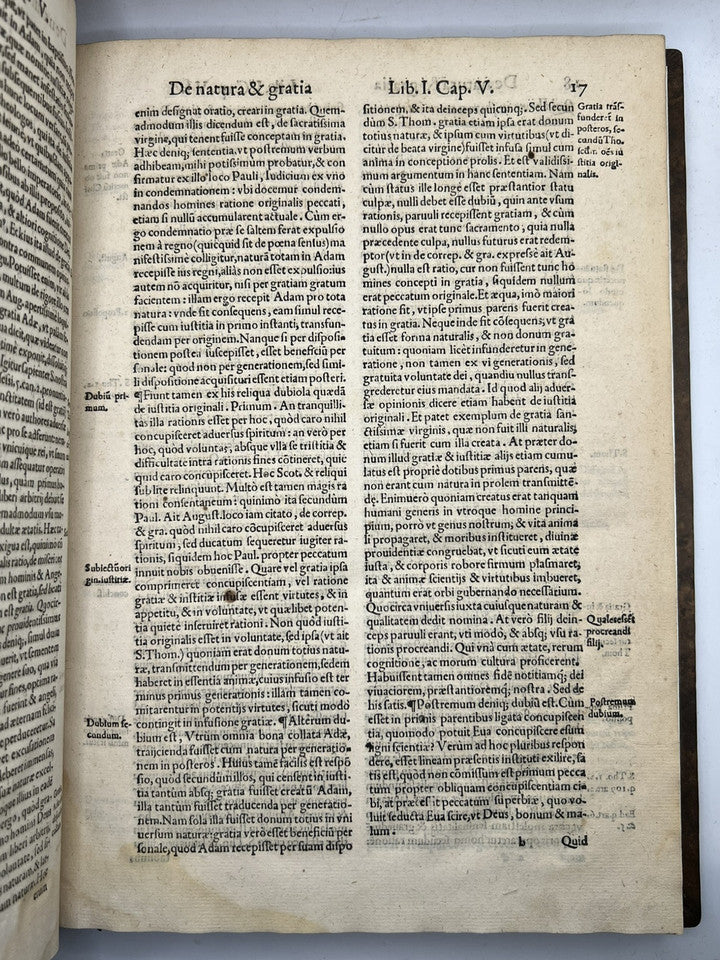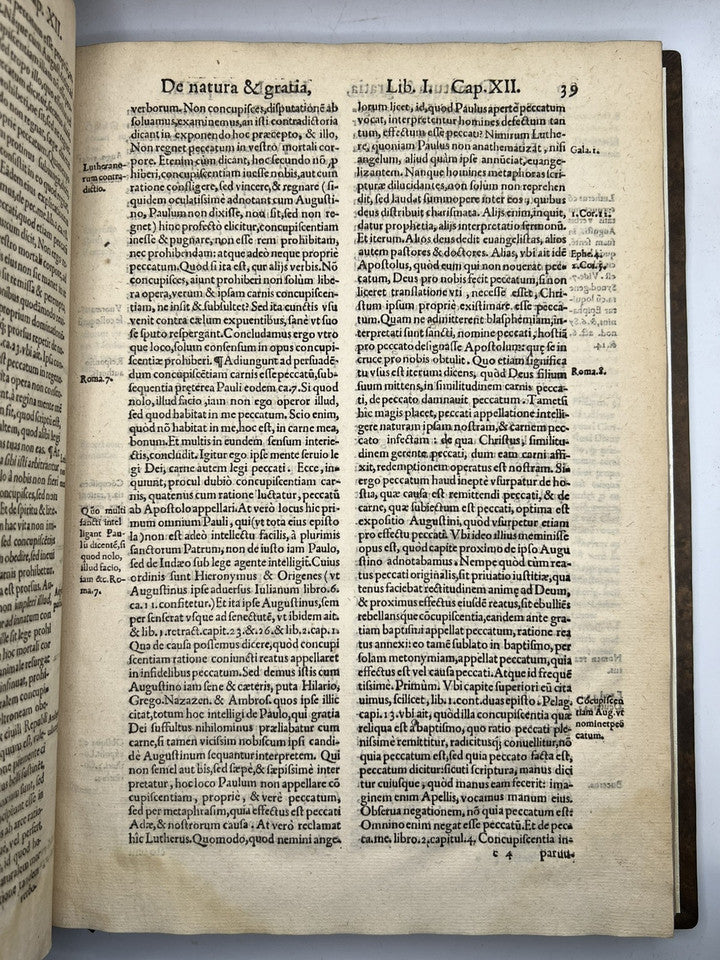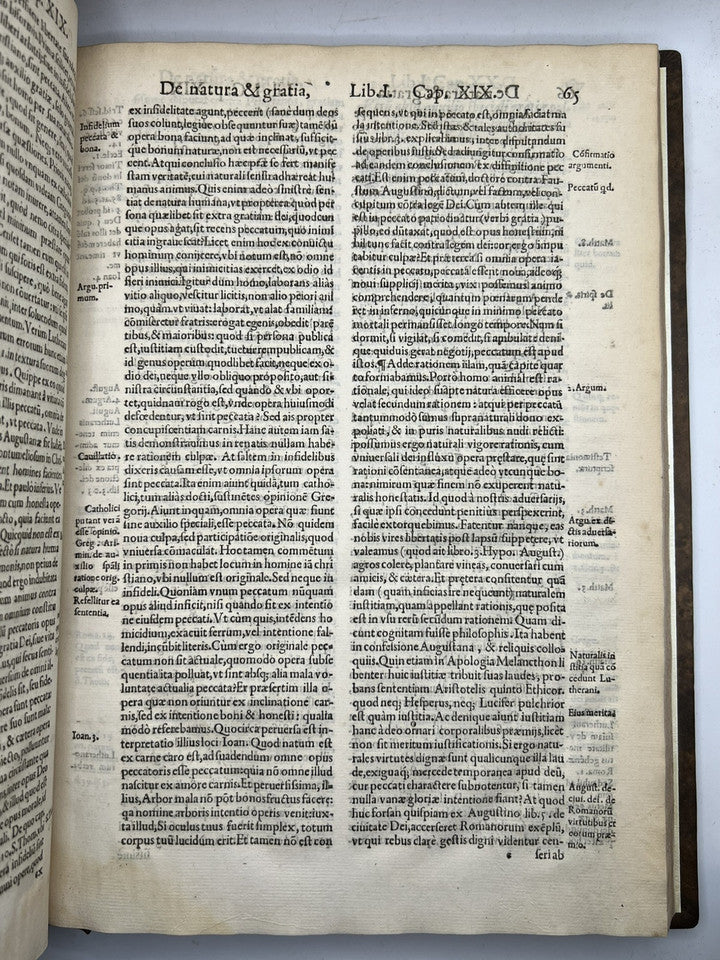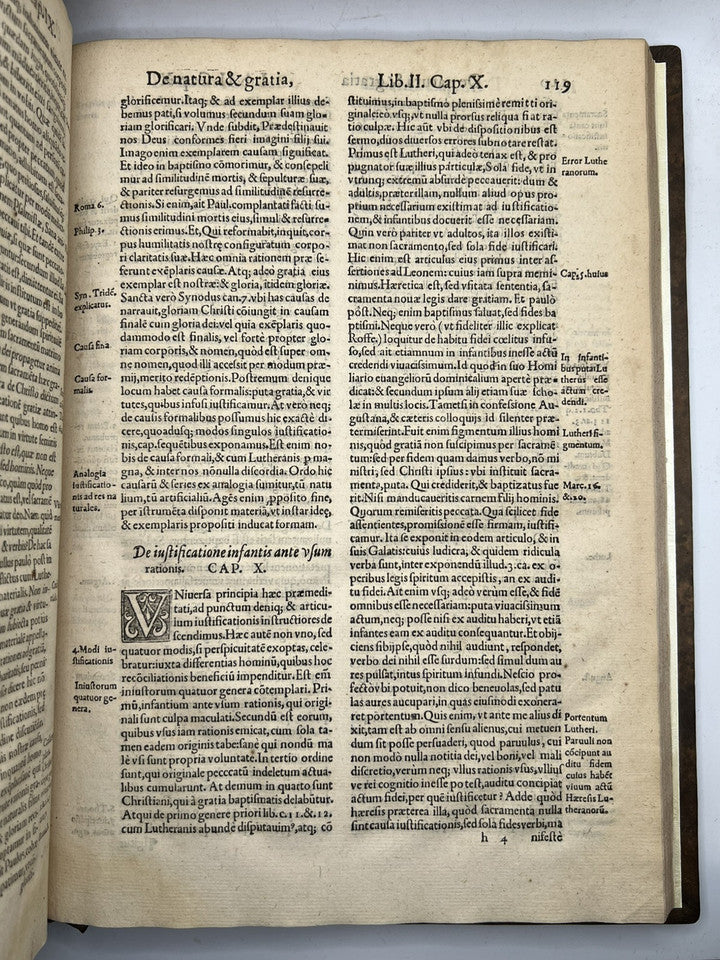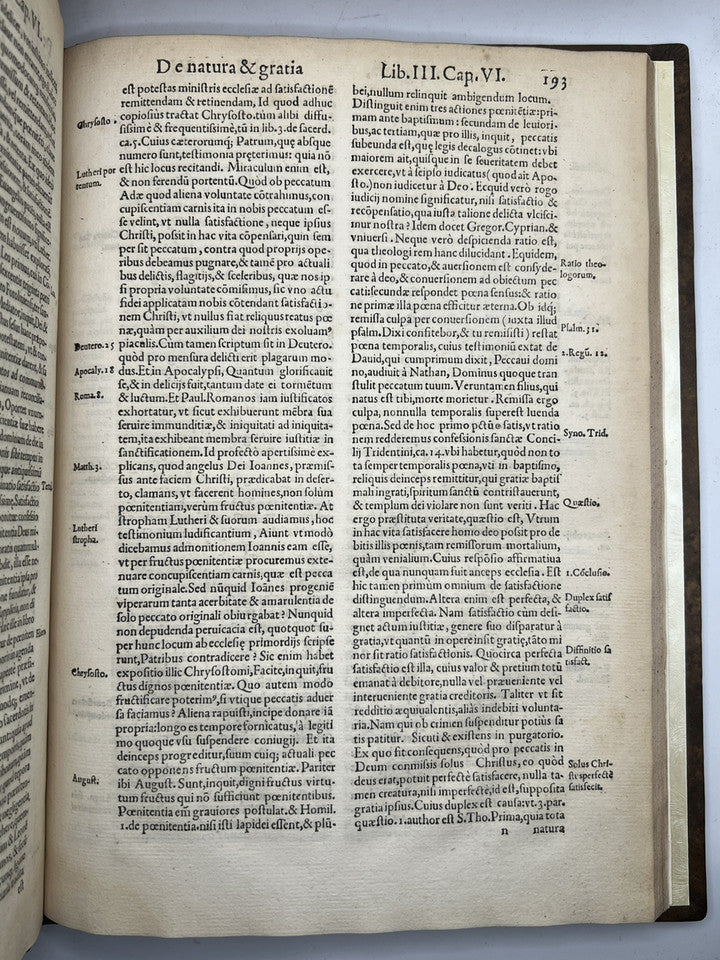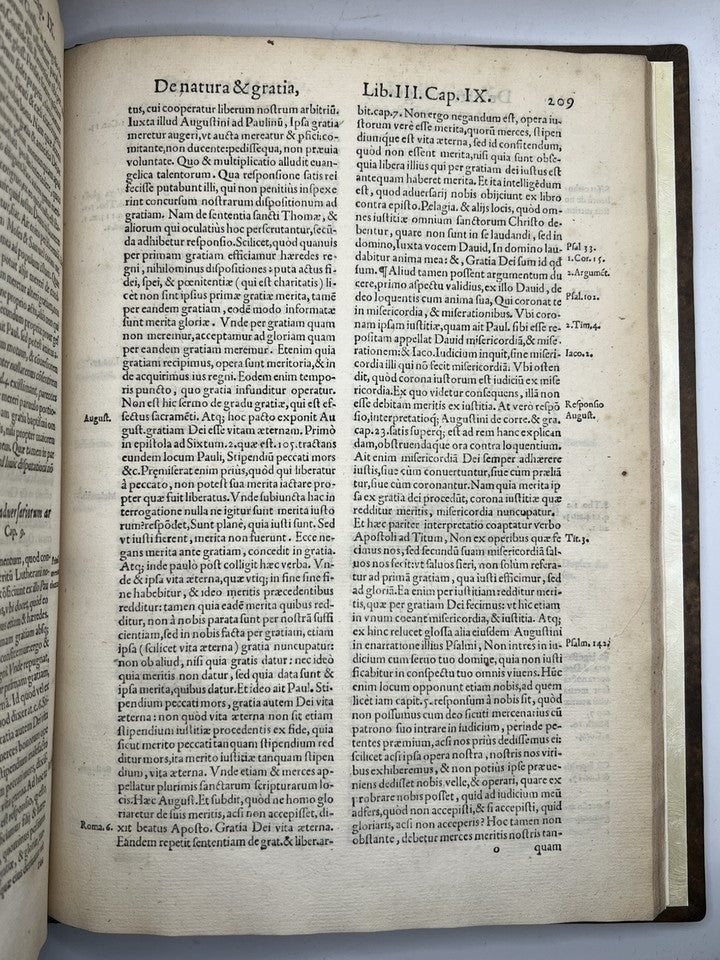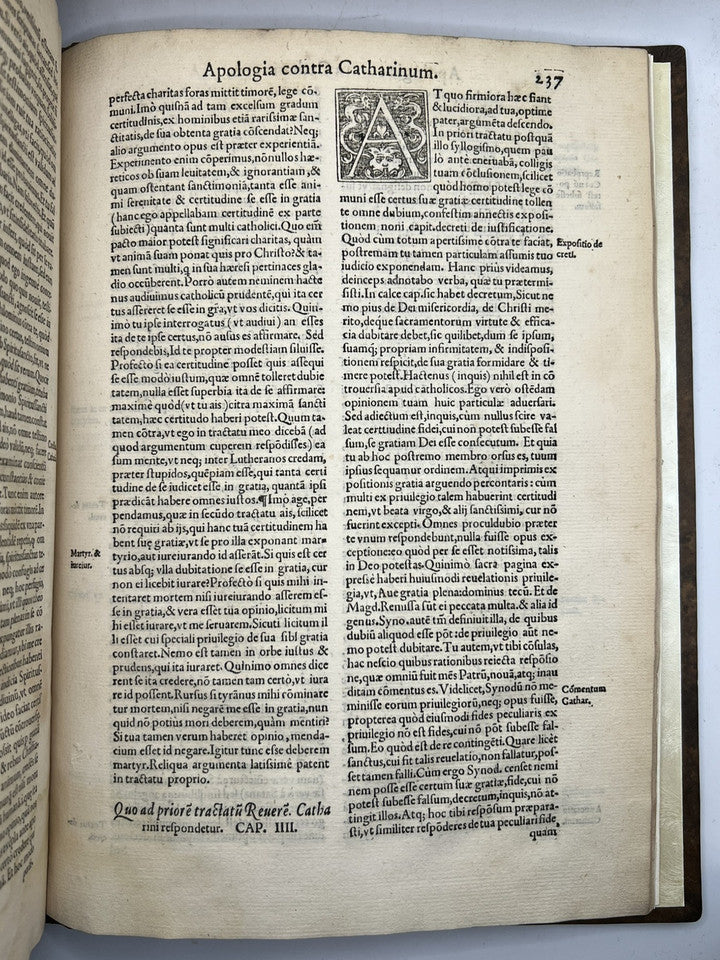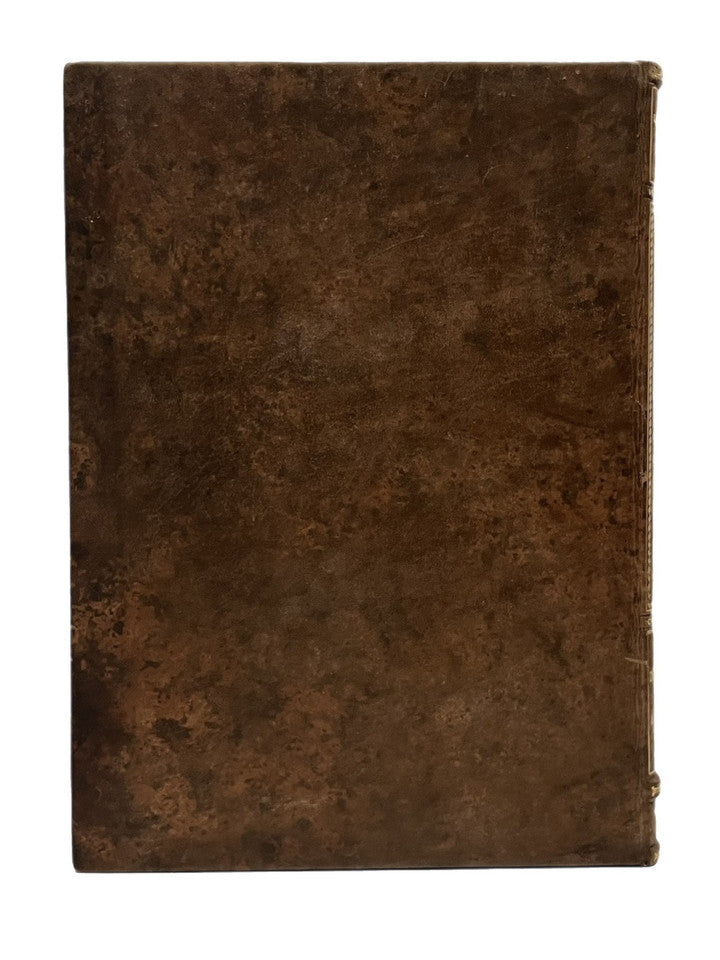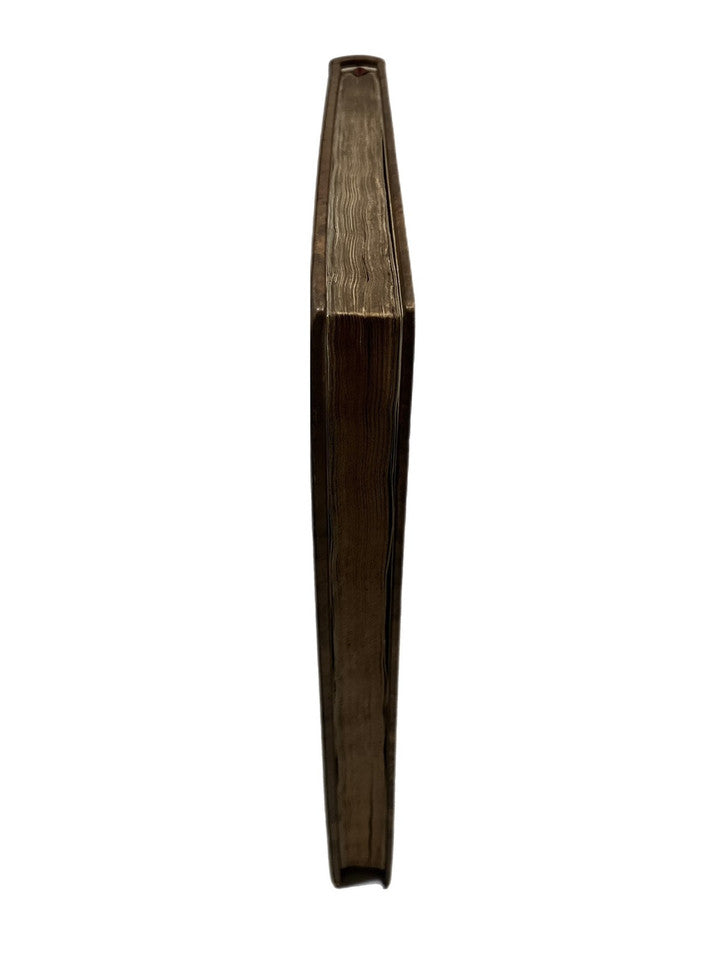Dominic Soto On Original Sin & Grace 1566
Dominic Soto On Original Sin & Grace 1566
Couldn't load pickup availability
Frateris Dominici Soto Segoviensis, Theologi, Ordinis Praedicatorum, et Caesareae Maiestati a sacris confessionibus, ad sanctum Concilium Tridentinum De natura et gratia libri III cum Apologia contra reuerendum Episcopum Catharinum. [...]. Salmanticae: Benedicti Boyerii Bibliopolae, 1566.
To the Brother Dominicus Soto of Segovia, Theologian of the Order of Preachers, and to His Imperial Majesty, by the sacred confessions, to the Holy Council of Trent: On Nature and Grace, in Three Books, with an Apology against the venerable Bishop Catharinus. […]. Salamanca: Benedict Boyer, Bookseller, 1566.
AN EXCEPTIONAL VERY EARLY EDITION OF DOMINIC SOTO'S IMPORTANT THOMISTIC TREATISE ON ORIGINAL SIN AND GRACE, INFLUENTIAL AT THE COUNCIL OF TRENT.
-------------------
From his earliest days in the university classroom, Soto undertook an attack on the via moderna and pressed for a revival of Aristotle. At Salamanca he collaborated with Francisco de Vitoria and Cano in their methodological reforms and on the development of what came to be known as positive or fundamental theology. Sent as imperial theologian to the Council of Trent by the emperor Charles V, Soto soon distinguished himself for his learning and piety. Steering the council away from compromise with the Protestants, he served as one of the principal defenders of tradition on such key questions as original sin, predestination, justification, the scriptural canon, and the authority of the Vulgate Bible. This work focusses on original sin and divine grace and 16th century editions of it are exceptionally rare, especially as early as this copy, being the earliest we can trace to have appeared in commerce given the unobtainability of the 1547 first.
In 1547, when the council was interrupted, Soto was appointed confessor and spiritual adviser to Charles V, a post he fulfilled for two years. Immensely pleased by Soto, Charles offered him the bishopric of Segovia. Soto refused the honour and in 1550 returned to teaching at Salamanca. That same year he took part in the celebrated debate held at Valladolid on the treatment of New World natives, joining his Dominican brethren in a thorough condemnation of the idea that the Indians were inferior beings worthy of enslavement. Soto’s chief opponent in this controversy was Juan Ginés de Sepúlveda, chaplain and official chronicler to Emperor Charles V. Sepúlveda’s defeat at the hands of Soto and other Dominicans led to the enactment of laws protecting the rights of native peoples in the New World.
Dominic Soto was a Spanish Dominican priest and Scholastic theologian and naturalist born in Segovia, and died in Salamanca, where this book was published. He is best known as one of the founders of international law and of the Spanish Thomistic philosophical and theological movement known as the School of Salamanca. He is also known for his contributions to mechanical physics. His works on mechanics and gravity, which he presented in his book "Physicorum Aristotelis quaestiones", in 1551, served as the basis for Galileo's and Isaac Newton studies. Significantly, in 1551, Soto became the first to state that a body in free fall accelerates uniformly and that this acceleration is caused by the mass of the Earth.
Being a Dominican, he was of course opposed by Jesuits such as Luis de Molina (founder of Molinism), particularly pertaining to his work on natural law.
-------------------
EXTREMELY RARE. Not in ESTC or USTC. USTC records only the much later 1584 edition. WorldCat records only 16 copies held institutionally worldwide across six separate entries. Some of these entries suggest there should be a second part to this which is not present here, but the entries for 12 of the 16 copies do not reference this, and so it would seem that this second part is typically not included. It bears the title 'De ratione tegendi & detegendi secretum', and so is possibly simply a separate work sometimes found bound alongside this, as this work is complete in itself and concludes definitively with "Laus Deo." We could trace no other copies of this edition, or of the first, in commerce, but only the later 1584 Venetian edition which sold for $407 in 2008 at auction in Germany which is of course far less desirable for being significantly later, and Venetian rather than Salamancan. This was printed just three years after the close of the Council of Trent.
-------------------
Size: 209 x 285 mm (approx.)
Condition:
[(2), t.p., *2-*6, 2*5, (1), a1-P8, Q7 , (2)] - (254pp.)
Modern full calf with gilt title and date to spine. Binding near fine with very minor signs of wear. Both boards securely attached. Very minor shelf and edge wear. Page edges toned. No attached bookplates. Title page with edge toning, a tape repair and an ink ownership inscription. Text block very clean with edge toning and sporadic foxing and marks. Tape repairs to some leaves near the gutter over some wormholing.
[OCLC 85230502, 1349616171, 1349618024, 1230862413, 1110448284, 954872484].
